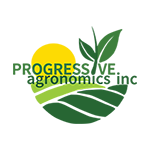Applying foliar nutrition products to ensure your crop has the nutrition it needs to finish strong is nothing new! In fact, Beck’s Practical Farm Research (PFR) has identified five PFR Proven foliar nutrition products for use in soybeans and four products in corn. If you are unfamiliar with the PFR Proven concept, it is any product or practice that has been tested in PFR and found to provide yield gains each year and a positive Return on Investment (ROI) over a minimum of three years. White it may seem like an obvious choice to incorporate these products on your farm, it may be more beneficial to take a targeted approach to foliar nutrition.
Tissue Sampling
This year saw challenging planting conditions across the Midwest. The wet fall and cool spring likely slowed mineralization, so fewer micronutrients were release by the soil. Many fields were planted into less than ideal soil conditions, which can result in a reduced root system. Soil tests may show adequate micronutrient supply, but the root system itself may not be accessing the nutrients. A tissue test gives real time information about what the plant actually takes up.
Incorporating a tissue sampling plan into your farm’s fertility program in conjunction with soil testing can further increase the effectiveness of plant nutrition. Although a targeted tissue sampling plan may not be efficiently established on every farm or field, a planned sampling scheme of fields can likely pay dividends, especially if micronutrient deficiences are occurring in the field. It’s worth noting that micronutrient results from a soil sample can be used as a starting point; however, the micronutrient information from a tissue sample is another layer of information that helps make more accurate decisions.
As tissue sampling has become more prevalent, there are many thoughts as to when you should pull samples. Often, we pull a tissue sample or two if we notice something wrong in a field. This is a reactive approach and the most common reason we tissue sample. If we see a deficiency or an off-colored area of a field, we try and identify the issue; however, if you can see the problem, it is likely that yield is already being impacted.
A Targeted Approach
What about taking a targeted, preemptive approach to tissue sampling? Instead of waiting for a problem to arise, plan a sampling scheme that works for you and, more importantly, fits in your budget. Some choose to sample bi-weekly or even weekly in intensively managed systems. I prefer to target specific growth stages. We know that big things happen at specific growth stages in crops. For example, in corn the V5 to V6, V8 to V12, VT to R1, and R3 to R5 growth stages are all critical periods of crop development.
It is also worth noting that in corn about 50% of total uptake occurs by the V12 growth stage for most micronutrients, whereas soybeans have a rapid uptake of micronutrients between R1 to R5 growth stages. Therefore, why not determine one or two locations within a field, and tissue sample these areas ahead of these critical growth stages? This can help identify nutrient issues, and allows time to make corrective applications, if needed, before these critical growth stages where ear development and ear fill can be impacted.
The PFR Proven products are all great products, and many of them contain multiple nutrients. Yet, if you don’t know which nutrient is deficient, how do you know which product to apply? If, for example, boron is deficient in a corn field, are you sure that the product that you intend to apply contains boron? A tissue test will tell you precisely what nutrients to target for application.
As we look to continue to increase yields, one way to do that is to create a plan, identify the need, and make applications that provide the best chance for a positive yield response. If you need help developing a tissue sampling plan for your farm, contact your Beck’s field agronomist, seed advisor, or dealer today!
~Sean Nettleton, CCA – Field Agronomist
